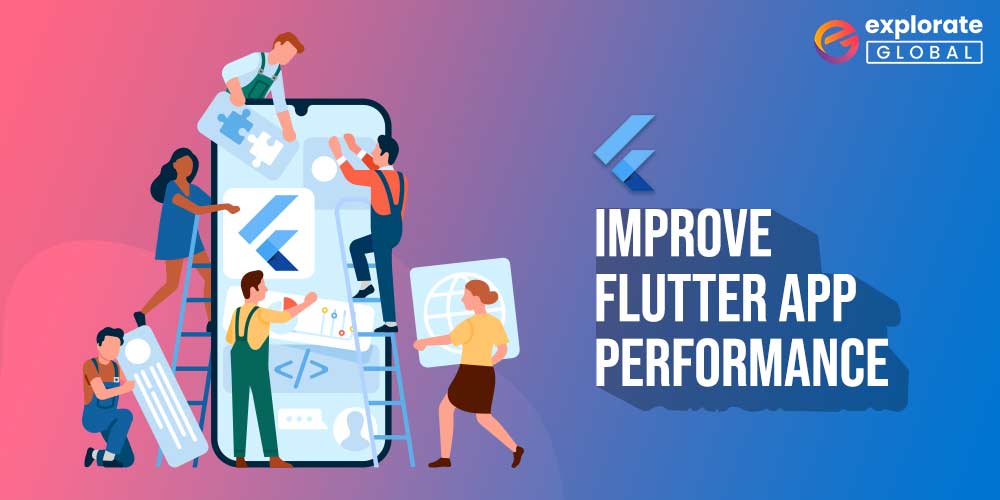App performance is a critical element of any cutting-edge mobile application.
Unfortunately, many factors such as skipped frames and freezes, damage the app’s reliability and leave a bad impression on users, ultimately harming the business’s reputation. Generally, the performance results are good enough when using Flutter development tools. However, you may still face problems with your Flutter app performance.
Generally, it is recommended to measure the Flutter app performance in the profile mode using an actual device instead of an emulator. However, performance testing in Flutter apps can be done in several ways since flutter performance testing offers a wide array of options for flutter app performance tests and measurements.
The Flutter app performance is crucial in confirming a seamless and pleasant user experience. And it is much needed to focus on the best Flutter app development practices and performance improvements for your Flutter app during development itself — to fix the issues before time and deliver an impeccable experience to your end-users.
In general, the performance of the Flutter app is efficient and responsive by default. Flutter app development is effective enough to run the application without problems. Still, it is always great to follow good Flutter app development practices to improve flutter app performance as much as possible. So you only need to avoid common drawbacks to get exceptional mobile app performance. Here, we have listed some of the best hacks that will help you with the most effective and innovative Flutter app development possible.
Use Stateless Widgets
The first mistake is that we depend excessively on state widgets to develop the Flutter application. While stateful widgets are great, if you have a large build function with a solid and exclusive widget tree calling setState(), you will use several resources to rebuild the complete widget.
Break heavy build functions
The solution to prevent heavy build functions is to break down large widgets into many widgets. The sub-widgets should be stateless widgets every time it is required. A stateless widget requires immutable configuration, so you should use it for UI parts that don’t change vigorously.
Do not use helper functions for rendering the user interface
If you have worked on different Cross-platform development frameworks or any other programming language, look for helper functions. Helper functions are good, but not in developing Flutter apps when rendering UI. For example, if you have parts of a screen in your app that repeats, try building a stateless widget rather than developing a private helper function to create the widget that would help to improve flutter desktop performance.
Divide Big Widgets Into Smaller Widgets
Similar to the hack we have discussed, it is recommended that you should try to minimise the size of your build function and keep widgets as small and modular as possible for improved flutter web app performance. This hack is similar to the reasoning behind hack number one. Stateful widgets are redrawn when there is a state change, meaning the complete widget will have to be rebuilt.
Use The Const Keyword
So, what is the difference between a standard widget and a constant one? First, as the definition implies, applying Const to the widget will initialise it at the compile time. This means that declaring the widget as a constant will initialise the widget and all of its dependencies at compile time rather than at the run time. This will also permit you to use widgets as much as possible while preventing unnecessary rebuilds.
When you break up your widgets into smaller sub-widgets and use stateless widgets wherever possible, it’s time to activate the resulting widgets. One way to achieve that is by decreasing the memory usage of your widgets. Using the Const keyword wherever applicable or required can be a great way to cut memory usage and improve Flutter app performance.
Render Only Widgets That Are Visible On The Screen
When dealing with an extensive vertical or horizontal list of widgets, you should always avoid using a solution that helps you create all the widgets visible on the screen simultaneously. In its place, always try using the widget “ListView.builder” to improve flutter app performance.
For example, let’s say you are developing the Twitter app and want to create a timeline with a large number of tweets. Then, it is highly recommended that you should avoid using a Column or a ListView constructor. If we use it, you will build all the tweets straight away when you load the application. This process is highly ineffective. Therefore, it is recommended to use Listview. builder widget.
Avoid Using the Opacity Widget As Much As Possible
It is recommended to avoid using the Opacity widget whenever it is possible. For example, many people can use the Opacity widget to hide a specific widget, standard in other programming languages such as Objective-C. Instead, try rebuilding your widget so that it rebuilds itself without the text widget.
For example, let’s say you want the widget to take up screen space. Then, you can use the Visibility widget, which is more effective than Opacity since it has only two states visible/invisible. However, keep a note that it doesn’t work with fractional opacity values.
Reduce Your App Size
It is easy to add several packages to your code during your Flutter app development process. But, as you may know, it can turn out to be bloatware. Let’s take the Android app as an example. You can use Gradle, a powerful open-source build Flutter development tool that comes with an excess of configuration preferences, to reduce the app’s size.
You can also create bundles of Android apps, a new packaging system introduced by Google. App bundles are effective in numerous ways. Firstly, only the actual code of a particular target device is downloaded from the Google Play Store. This becomes possible as the Google Play Store repacks and distributes only the required files and resources for the target device’s screen density, supporting hardware features, platform architecture, etc.
Statistics from the Google Play Console show that the app download size decreases by 40-60% in most cases when you choose app bundles over APKs. This is one of the pros of flutter development, and the best practice for reducing APK size is to employ ProGuard rules for your Android app. ProGuard uses rules that eliminate unused code from the final package created.
Conclusion
Flutter app development brings numerous benefits to companies that focus on preparing functional mobile applications with a visually attractive design. Although Flutter as a Cross-platform development framework comes jam-packed with features and constantly evolves with new updates, Flutter app performance is always a key consideration.
App performance has been a major determining factor when capturing the global market. Considering the different characteristics of mobile apps, such as app size, device resolution, hardware capabilities, the execution speed of the code, and improving Flutter app performance can make a huge difference, mainly when targeting large audiences.
A reliable app means faster rendering and optimum resource utilisation, ensuring a bug-free and smooth user experience. It also contributes significantly to an app’s popularity. So, if you’re currently thinking about developing your mobile app, it is advised to let the professionals handle the task. Outsource Flutter development company like Explorate global to help you build visually appalling and interactive mobile apps to stay productive in this competitive world.


